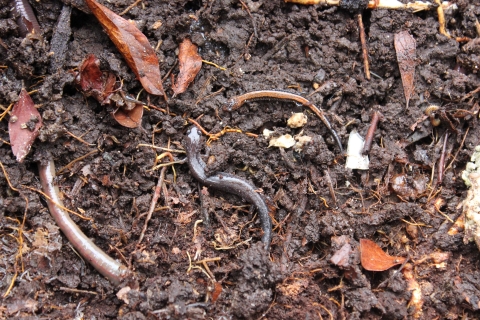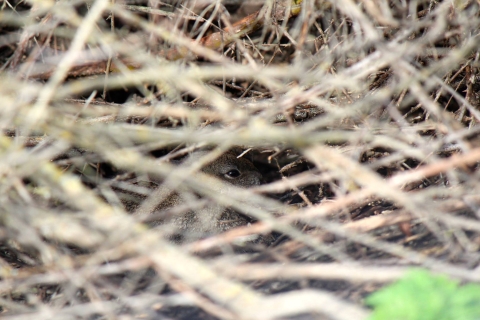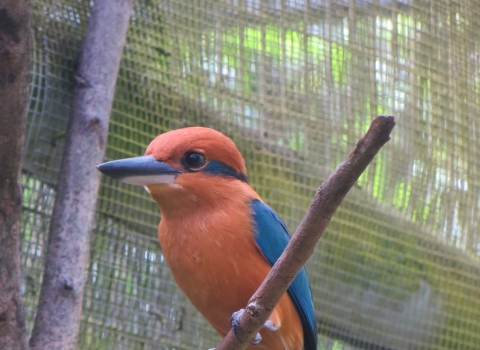Creating brush piles, also known as habitat piles, is a quick and easy way for you to benefit many species of wildlife. Made up of woody debris and loose leaf litter stacked together, these piles provide great shelter for small mammals like chipmunks, voles and squirrels, along with amphibians and reptiles such as salamanders and snakes. Weasels, foxes, and hawks will also use them for shelter and hunting grounds. Many birds use these woody sanctuaries for cover and will often times nest along logs or under a pile of branches on the ground. Overtime, the decaying wood will bring insects for birds and small mammals to feed on and ultimately give nutrients back to the soil.
At the Parker River National Wildlife Refuge visitor center, volunteers have been creating a series of habitat piles using debris from woody invasive species invasive species
An invasive species is any plant or animal that has spread or been introduced into a new area where they are, or could, cause harm to the environment, economy, or human, animal, or plant health. Their unwelcome presence can destroy ecosystems and cost millions of dollars.
Learn more about invasive species that have been removed from the site. When re-purposing vegetation from invasive species, always make sure you're not accidentally spreading seeds, and create the pile where you cut the plants. This reduces the chance of spreading invasive vegetation to other sites.
If you are thinking about creating your own habitat piles on your property, you want to make sure you are considering the animals needs. Pick places where there is a lack of natural cover such as clearings, fence rows, or woodland edges like this one is placed here. Look to place them in areas that wildlife use such as water sources or existing food sources.
Next time you are cleaning your yards of leaf litter, removing pesky woody invasives that are difficult to get rid of or trimming trees, instead of disposing it, think about how useful these materials can be to the wildlife near you. Natural shelter is scarce throughout our increasingly fragmented suburban areas and your habitat piles could help give wildlife a safe space. Learn about other ways to use leaf litter and plant debris in your yard to benefit wildlife here.





